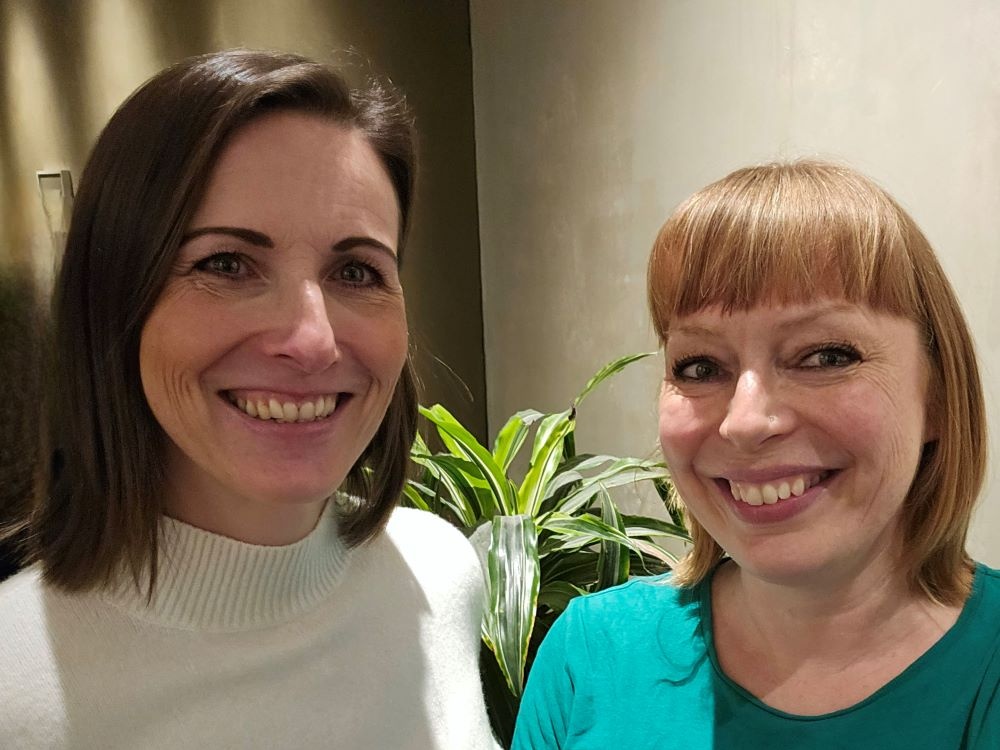Balance problems can be caused by a number of different things. Causes can include damage to nerves (neuropathy), changes in the balance centre of the brain (cerebellum), and vestibular dysfunction (problems with the inner ear and brain that can affect balance).
Vestibular problems have not always been correctly identified in patients with a mitochondrial disease diagnosis. For example, someone who looks unsteady might also have nerve damage. This person’s balance problems may have been explained by nerve damage alone, with vestibular problems – for which there may be treatments available – being missed.
Amanda Male and Sarah Holmes, physiotherapists specialising in neuromuscular and vestibular rehabilitation, worked with Professor Diego Kaski and international specialists in vestibular medicine to develop a new diagnostic framework designed to more accurately identify vestibular causes of balance problems.
This diagnostic framework included six questions to help identify three balance issues. Firstly, vestibular dysfunction. Secondly, Benign Paroxysmal Positional Vertigo (BPPV), a common condition that causes dizziness when you move your head. And finally, Vestibular Migraine (VM), which makes you feel dizzy and off-balance and is linked to migraines.
In order to investigate the accuracy of this diagnostic framework, Sarah and Amanda worked with colleagues at the NHS Rare Mitochondrial Disorders Service at Queen Square, London, to recruit 83 adults with primary mitochondrial diseases to the study, some with and some without dizziness or unsteadiness.
The research study involved a physiotherapy assessment and in-person exams to see how well participants could keep their balance. The diagnostic framework questions were then asked. The results of the in-person exams were compared with the framework questions to see how good the framework was at ruling in and ruling out vestibular dysfunction, BPPV and VM.
The results of the study showed that the test could identify each of the three balance problems with pretty good accuracy. Importantly, it could also confirm if any of the issues weren’t present. This means the assessment could be a quick and simple way for local healthcare providers to identify these conditions so that they can refer for treatment without needing to wait for specialist assessments.
What does this mean for mitochondrial disease patients?
- Early identification – it helps find balance issues early so that healthcare providers can help right away.
- Targeted treatment – once identified, specific treatments can be suggested to improve symptoms.
- Efficient diagnosis – it provides a fast and efficient tool that can be used in non-specialist care settings, ensuring a rapid diagnosis.
- Avoiding overdiagnosis – it can prevent unnecessary treatments and medications for conditions that aren’t actually there.
At the moment, vestibular testing is very specialist and waiting lists can be long, but thanks to our funding and Amanda and Sarah’s hard work and dedication, mitochondrial disease patients might now be able to access treatments relatively easily, with positive results.
Physiotherapy for inner ear problems can reduce falls and dizziness and improve balance, so the work they’ve done is a big step in giving people with mitochondrial disease the opportunity to access targeted treatment they might otherwise have missed to improve symptoms and quality of life, and that gets a big thumbs-up from us.
“It was amazing to have Lily’s support,” reflects Sarah on completion of the study. “We had some challenges in running the study during the pandemic, trying to recruit people whilst managing the risk of infection, especially when many were shielding. But I’m so proud of the team’s hard work and support, recruiting 83 of our target 100 participants. And, of course, we’re hugely grateful to those people living with mitochondrial disease who gave up their time and energy to consider, support and participate in the study.”
More work will need to be done on a larger scale to investigate the use of the framework in people with other medical conditions. However for mitochondrial disease patients it’s ready to go now, so we’d encourage anyone experiencing balance issues who feels this might benefit them to share with their healthcare team, if appropriate.

